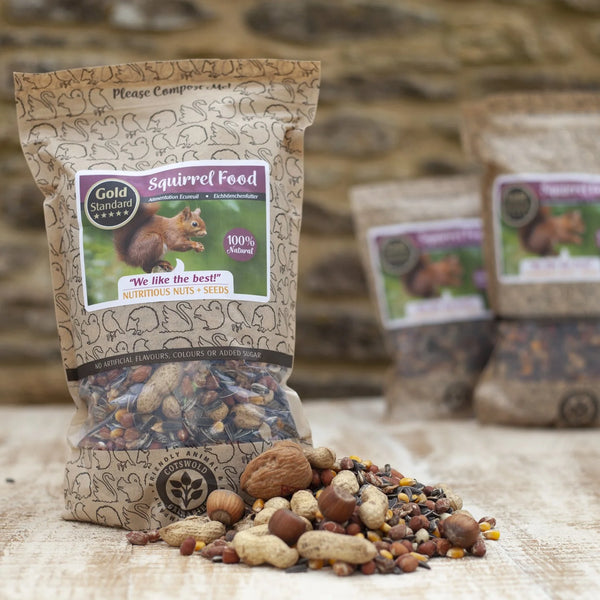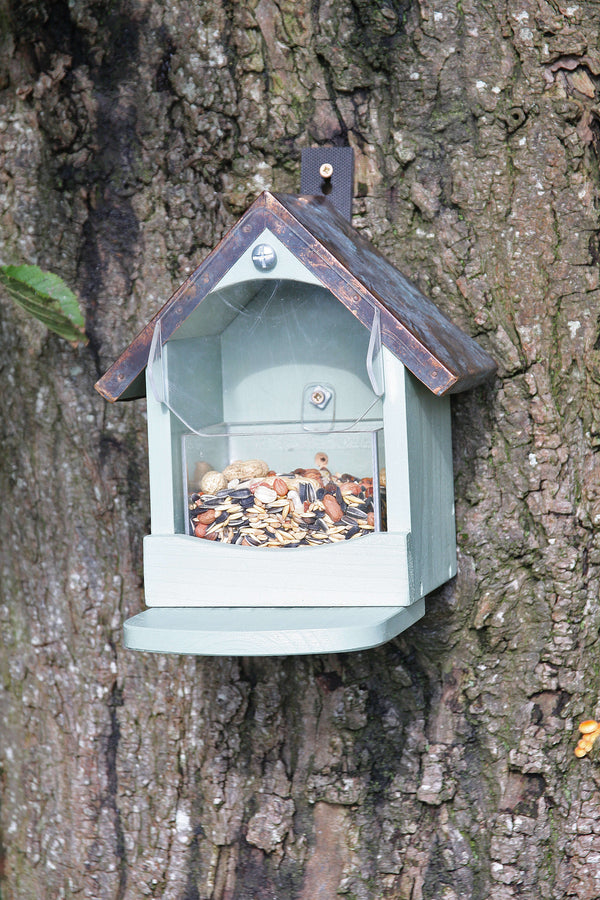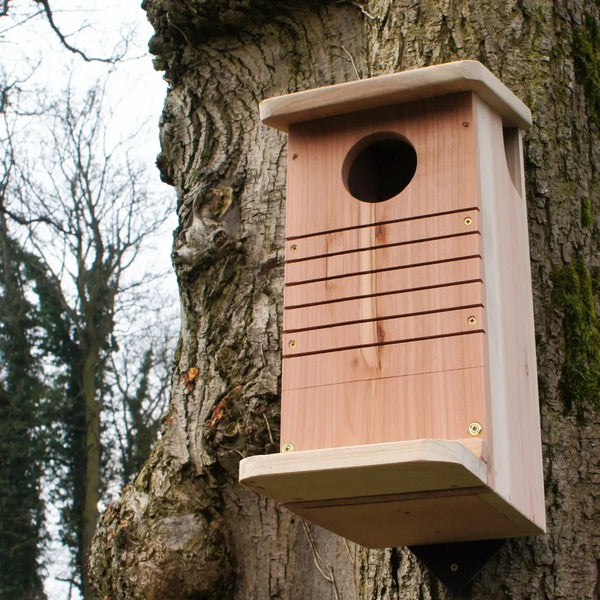Do Squirrels Hibernate in the Winter?
Winter is a season of hushed landscapes, frozen landscapes, and, for many animals, a time of dormancy. While we often think of bears and groundhogs when we hear the word "hibernation," the habits of smaller, more agile creatures like squirrels can be a bit more complex.
In this blog post, we'll delve into the intriguing world of squirrel hibernation, exploring where they seek shelter, the duration of their hibernation-like states, the differences between red and grey squirrels, and what you can do to assist these resilient rodents during the harsh winter months.

What is Hibernation?
Hibernation is a state of dormancy or reduced activity that some animals enter into during the cold winter months or periods of extreme cold or food scarcity. This state allows these animals to conserve energy and survive harsh environmental conditions. Hibernation is a complex physiological process that involves a drop in metabolic rate, body temperature, and heart rate.
Where do Squirrels Hibernate?
Most squirrels, being highly adaptable creatures, have several choices when it comes to winter shelter. Most squirrels do not hibernate in the same way that bears or bats do, but they do take measures to stay warm and conserve energy. They are very selective on where to live in the winter months.
Squirrels build nests that are super cosy called dreys, which are built high up in trees using leaves, twigs, and other natural materials. These nests offer excellent insulation against the elements and help squirrels retain body heat. In addition to dreys, tree cavities also serve as ideal shelters for some squirrel species, offering better protection from harsh weather conditions.

How Long do Squirrels Hibernate?
The duration and intensity of squirrel hibernation-like states can vary depending on species, location, and the severity of the winter. As mentioned earlier, squirrels are not "true" hibernators, but they enter short-term states of dormancy, known as torpor, as an energy-saving strategy.
Torpor can last anywhere from a few days to several weeks. During these periods, squirrels become less active, their body temperature drops, and their metabolism slows down to conserve energy.
Red and Grey Squirrel Hibernation
The hibernation habits of red and grey squirrels, two common North American species, differ slightly. Grey squirrels are often considered semi-arboreal, meaning they are more active throughout the year. During extremely cold spells, they might spend more time in their dreys to keep warm.
In contrast, red squirrels are known to go into longer torpor periods. They rely on their food stores, such as nuts, to sustain them during these periods of dormancy, especially when natural food sources are scarce.

Why Don’t We See Many Squirrels During the Winter?
One common question that arises during the winter months is why we don't see as many squirrels as we do in the warmer seasons. The answer lies in their behavioural adaptations. During torpor, squirrels minimise their activity to conserve energy.
They will only venture out of their shelters when it's necessary, primarily to search for food or water. In harsh winter conditions, they often remain concealed in their nests or tree cavities for extended periods, reducing their visibility to humans.
Can You Help Hibernating Squirrels?
If you come across a squirrel in what appears to be a dormant state during winter, it's crucial to respect their natural behaviours and not disturb them. Attempting to provide food or moving them can be more harmful than helpful, as these creatures have evolved to survive the winter in their own way.
However, there are indirect ways to assist hibernating squirrels during the winter:
-
Supplemental food: If you want to support squirrels, consider placing squirrel nuts, seeds, fruits and squirrel food in your garden to provide them with sustenance when natural food sources are scarce. Be mindful of what foods are appropriate for squirrels to eat, and avoid overfeeding. You can even use bird feeders to help supply squirrels food.
-
Maintain habitat: To create a squirrel-friendly environment, protect their natural habitats, including mature trees and wooded areas. You can also set up nesting boxes to offer safe spaces for squirrels to rest. Squirrel houses or nest boxes can allow for them to be comfortable in your garden and give them a place to stay warm in winter.
-
Water sources: In regions with freezing temperatures, finding liquid water can be challenging. Provide a heated birdbath or a small dish of fresh water to help squirrels stay hydrated.
-
Observation from a distance: While it's tempting to watch and photograph these captivating animals, maintain a respectful distance. Use binoculars or telephoto lenses to observe them without causing stress.

What Animals do Hibernate?
Several animals hibernate to varying degrees, including:
-
Bears: Bears are some of the most famous hibernators. They enter a deep, long-term hibernation in which their metabolic rate drops significantly, and they can go without eating or drinking for months. During this period, they rely on their fat stores for energy.
-
Groundhogs (Woodchucks): Groundhogs are known for their role in predicting the arrival of spring on Groundhog Day. They hibernate deeply, and their body temperature and heart rate drop substantially. They may wake up periodically to check the weather outside.
-
Bats: Many species of bats hibernate during the winter, hanging upside down in caves or other sheltered locations. Their body temperature decreases, and they enter a state of torpor to save energy.
-
Chipmunks: Similar to squirrels, chipmunks are not true hibernators. They go into a state of torpor and wake up periodically to feed on the stored food in their burrows.
-
Hedgehogs: Hedgehogs hibernate during the winter months in a state of torpor, with their body temperature and metabolic rate significantly reduced.
-
Turtles: Some species of turtles, such as the box turtle, undergo a form of hibernation called brumation. They bury themselves in the ground or hide in submerged water bodies, where their metabolism slows down, and they become less active.
-
Amphibians: Certain amphibians, like frogs and salamanders, may hibernate underwater or burrowed in mud or soil. Their metabolic activity slows down during this time.
-
Insects: Insects, like ladybugs and some species of butterflies and moths, enter a state of diapause, which is similar to hibernation. They reduce their metabolic rate and become less active during the winter.

Conclusion: An Enigmatic Winter Strategy
Squirrels, with their remarkable ability to adapt, do not truly hibernate as some other animals do. Instead, they employ a combination of torpor and nesting in dreys or tree cavities to navigate the challenges of winter.
By understanding and appreciating their natural behaviours, we can help ensure these incredible creatures continue to thrive, even during the harshest winter conditions. So, the next time you spot a squirrel in apparent slumber during the winter, remember that it's not merely sleeping—it's a part of nature's ingenious winter survival strategy.











